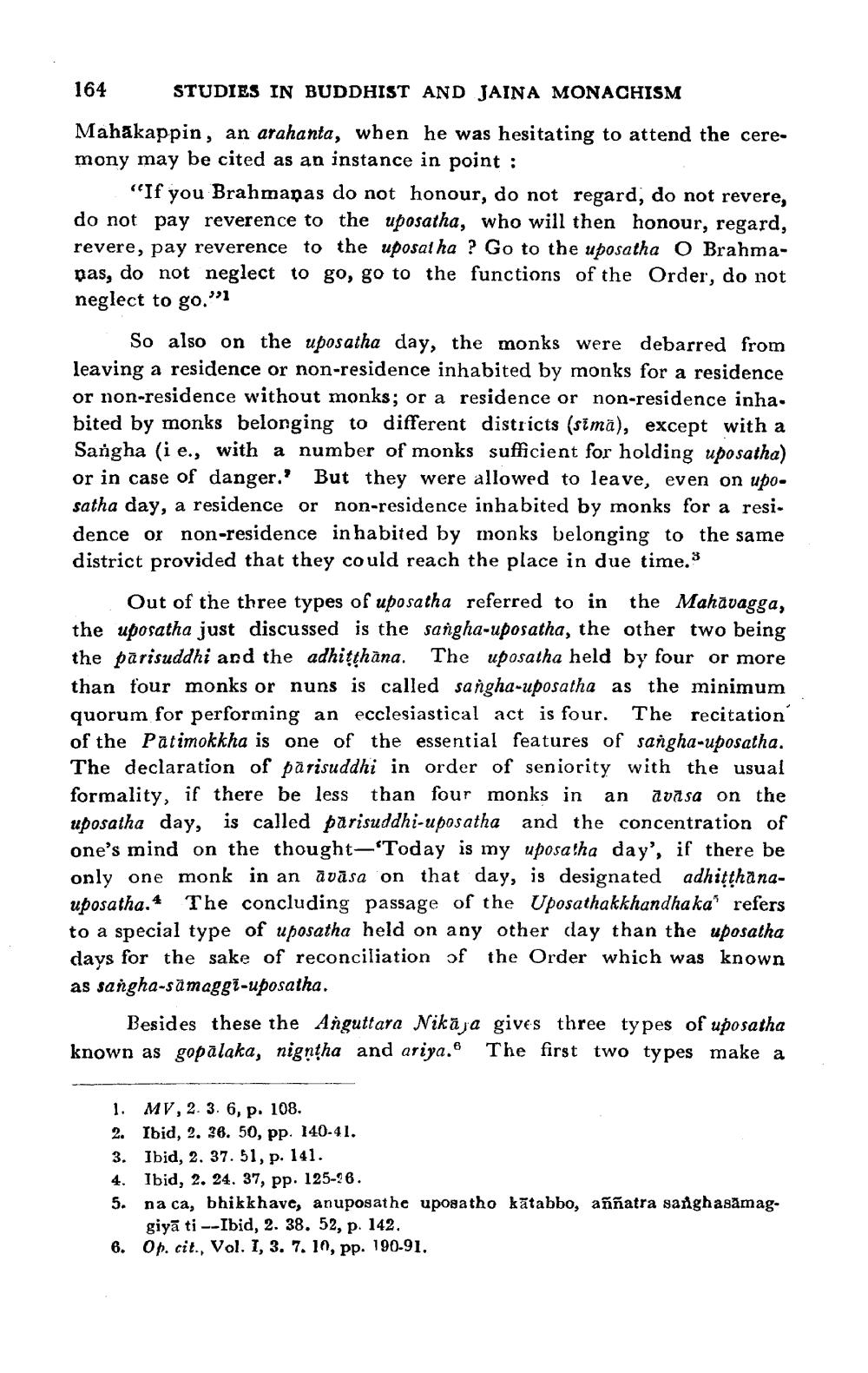________________
164
STUDIES IN BUDDHIST AND JAINA MONACHISM
Mahakappin, an arahanta, when he was hesitating to attend the ceremony may be cited as an instance in point :
"If you Brahmapas do not honour, do not regard, do not revere, do not pay reverence to the uposatha, who will then honour, regard, revere, pay reverence to the uposat ha ? Go to the uposatha O Brahmapas, do not neglect to go, go to the functions of the Order, do not neglect to go."
So also on the uposatha day, the monks were debarred from leaving a residence or non-residence inhabited by monks for a residence or non-residence without monks; or a residence or non-residence inha. bited by monks belonging to different districts (sima), except with a Sangha (i e., with a number of monks sufficient for holding uposatha) or in case of danger.' But they were allowed to leave, even on upo. satha day, a residence or non-residence inhabited by monks for a resi. dence or non-residence in habited by monks belonging to the same district provided that they could reach the place in due time.3
Out of the three types of uposatha referred to in the Mahāvagga, the uposatha just discussed is the sangha-uposatha, the other two being the parisuddhi and the adhitthāna. The uposatha held by four or more than four monks or nuns is called sangha-uposatha as the minimum quorum for performing an ecclesiastical act is four. The recitation' of the Patimokkha is one of the essential features of sangha-uposatha. The declaration of pārisuddhi in order of seniority with the usual formality, if there be less than four monks in an avāsa on the uposatha day, is called parisuddhi-uposatha and the concentration of one's mind on the thought-Today is my uposatha day', if there be only one monk in an āvāsa on that day, is designated adhitthanauposatha. 4 The concluding passage of the Uposathakkhandha ka' refers to a special type of uposatha held on any other day than the uposatha days for the sake of reconciliation of the Order which was known as sangha-samagg?-uposatha.
Besides these the Anguttara Nikāja gives three types of uposatha known as gopalaka, nigntha and ariya.. The first two types make a
1. MV, 2. 3. 6, p. 108. 2. Ibid, 2. 36. 50, pp. 140-41. 3. Ibid, 2. 37. 51, p. 141. 4. Ibid, 2. 24. 37, pp. 125-26. 5. na ca, Bhikkhaveanuposathe uposatho kātabbo, aññatra sanghagầmag
giyā ti --Ibid, 2. 38. 52, p. 142. 6. Op. cit., Vol. 1, 3. 7. 10, pp. 190-91.




